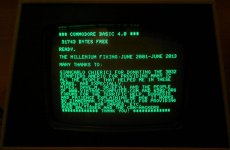giobbi
Veteran Member
Have you considered changing keyboards? ;-) I guess the 9" monitor would look funny on top of the 8032 base? ;-)
I only have 8032-sk models, one perfectly working and one working "more or less" (some issues) without keyboard.
So, swap the keyboards is not an option... :-(
But what is the difference between graphic keyb assy and business keyb assy? Is it just a ROM difference?
And what the pin 39 of the 6522 in the schematics
http://www.zimmers.net/anonftp/pub/cbm/schematics/computers/pet/2001N/320349-3.gif
stands for? It's marked as "graphic"...
How about this: connect the keyboard from your 8032, plug in either set of ROMs with the appropriate (working) business KB ROM, put the corresponding graphic E ROM into the spare 'A' socket and calculate the checksum.
do you mean to use the working 8032 adding..? the original graphic E rom of the basic-2 OR the E rom image from basic-4 ?
I can easily do that, of course. I think I've already calculated the checksum of the original E rom when you asked me some days ago (see previous posts).
---edit: I'm using the rom image from zimmers, so is it interesting to calculate it by the 8032? Just a curiosity...
Last edited:

